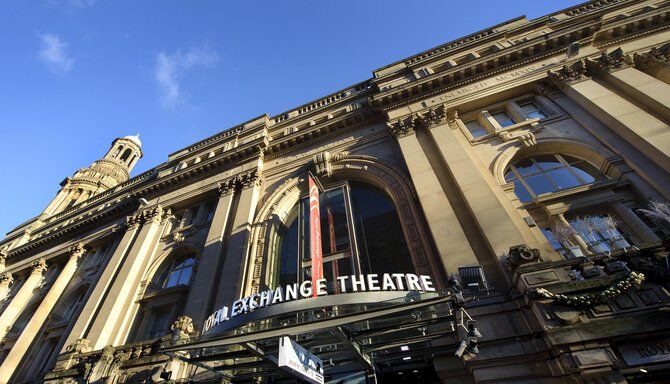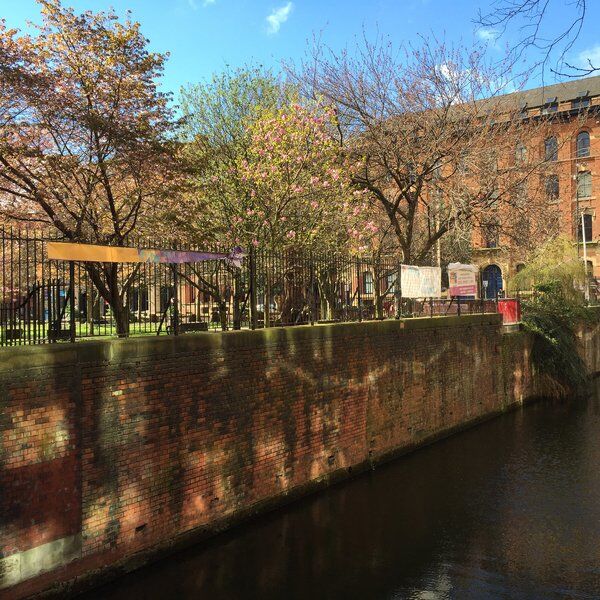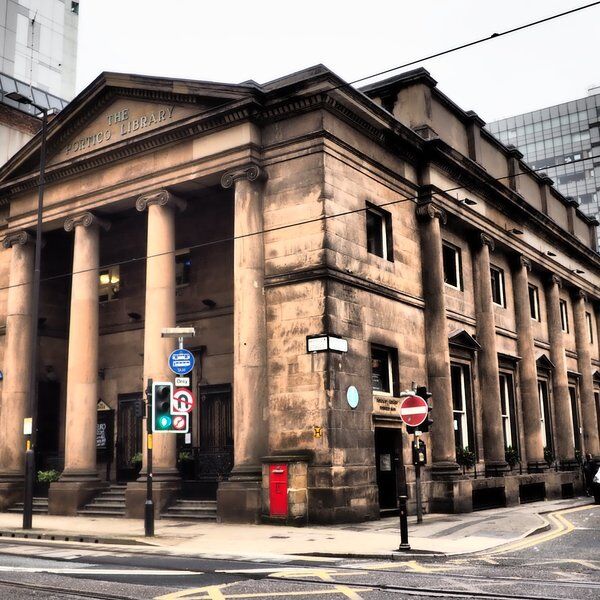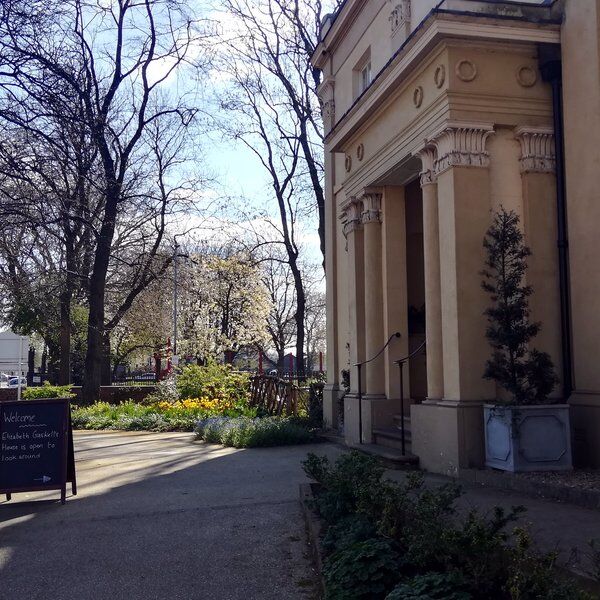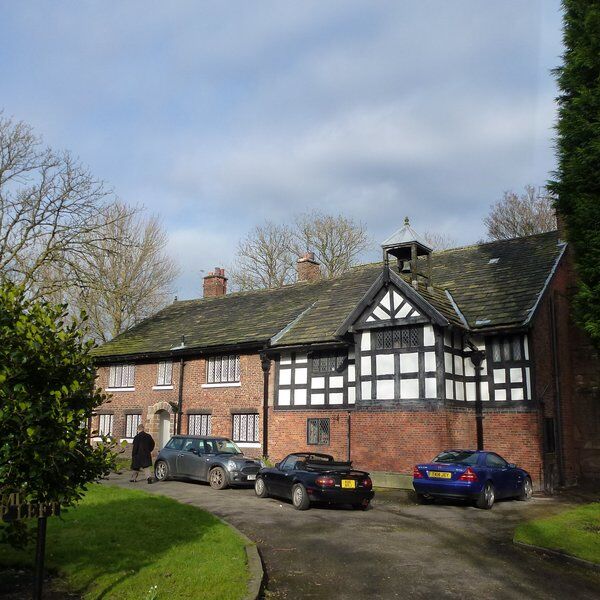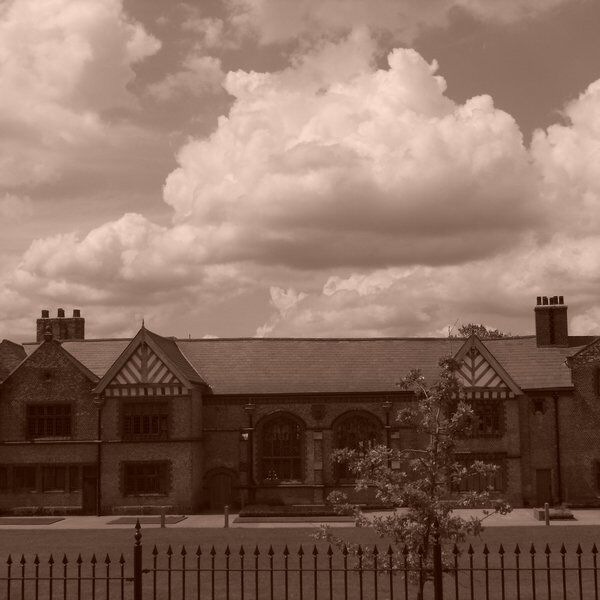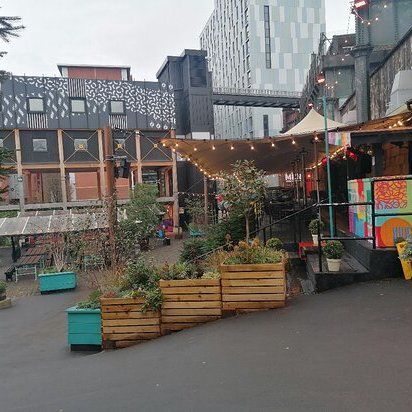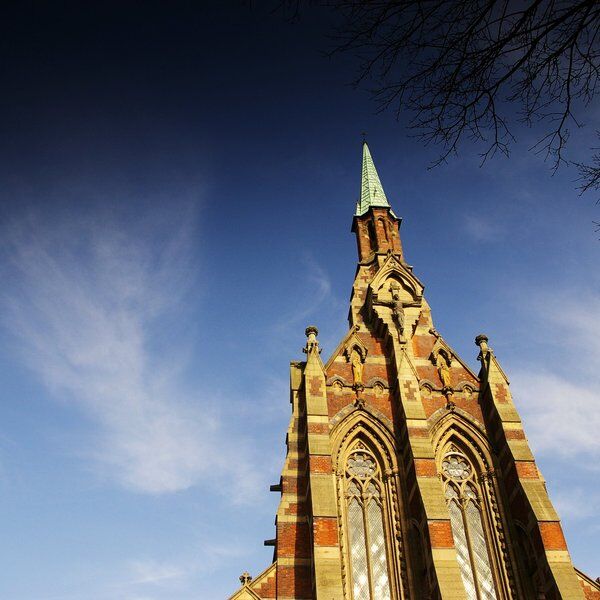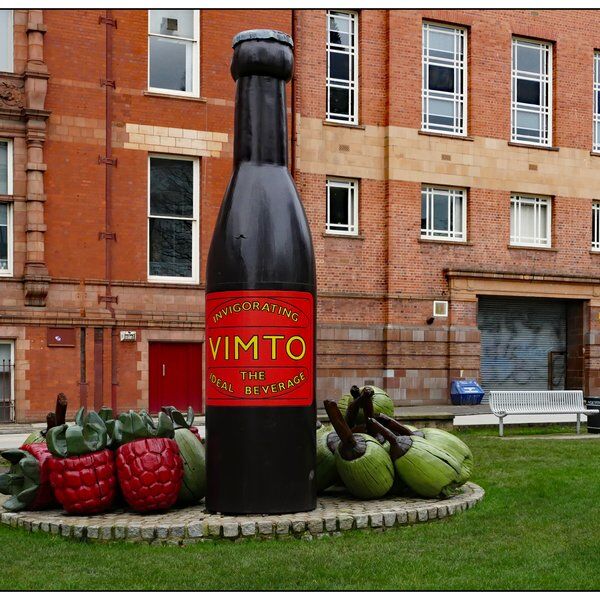There’s no denying that the Royal Exchange Theatre is a masterpiece, even from street level.
In fact, whether you’ve ventured beyond its doors or not, I’m sure that its sheer size and grandeur has made you take a second look. And if it hasn’t, it should.
Nestled in the heart of the city centre, the Royal Exchange Theatre is far more than a venue for stage plays. It’s a stunning blend of cultural innovation and deep-rooted Manchester history that deserves a place in everyone’s consciousness, whether you’re a visitor or not.
Believe it or not, this was once the epicentre of the global cotton trade, and this iconic building has survived wars, bombings, and the collapse of industry. Today, it thrives as one of the UK’s most distinctive and dynamic performance spaces, attracting world-class talent and curious visitors alike.
Let’s delve a little deeper into this fascinating place and find out where it sits as one of Manchester’s most iconic buildings…
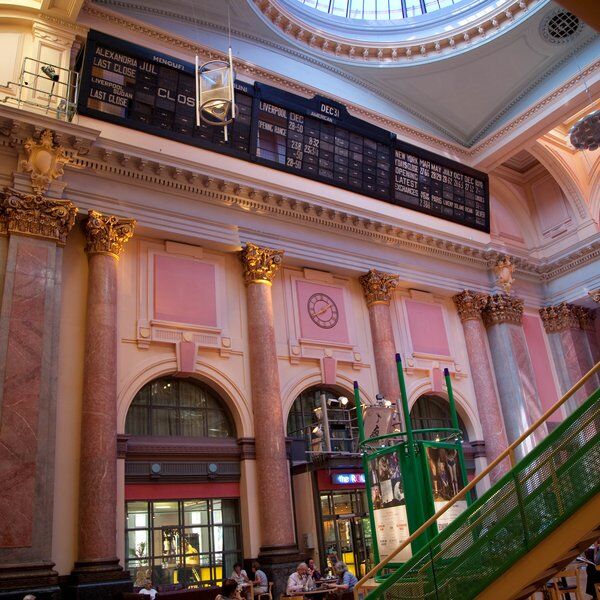
A Monument to Manchester’s Industrial Might: The Origins of the Royal Exchange
Long before it became one of the UK’s most respected theatres, the Royal Exchange was the beating heart of Manchester’s industrial empire.
Built in the late 19th century to replace the then-delipidated “exchange”, this grand structure originally served as the Royal Exchange Building, a vast trading floor where the city's booming cotton industry held sway over the global textile market.
Yes, that means we need to discuss a far more unpleasant side of Manchester’s history: the city’s involvement in slavery. The ships that brought cotton to England’s shores as saleable cargo also transported humans, usually from the West Indies and Africa.
In 1807, an estimated one in five Mancunians signed a petition for the abolition of slavery. However, decades later, Lancashire textile workers were still processing cotton picked in the American South by enslaved people.
The sheer scale of commerce and industry in Manchester, often relating to slavery, contributed to the Royal Exchange becoming the largest trading hall in the world.
It was here that cotton merchants gathered beneath its awe-inspiring glass dome to negotiate deals that would shape the fortunes of cities and nations, and people all over the world. The building’s neoclassical façade and opulent interior spoke volumes about Manchester’s wealth and ambition during the Industrial Revolution.
Today, visitors can still see traces of this powerful past (check out the preserved trading board, it’s worth it!). The grandeur remains, but the Royal Exchange has transformed from a centre of commerce into a centre for culture.
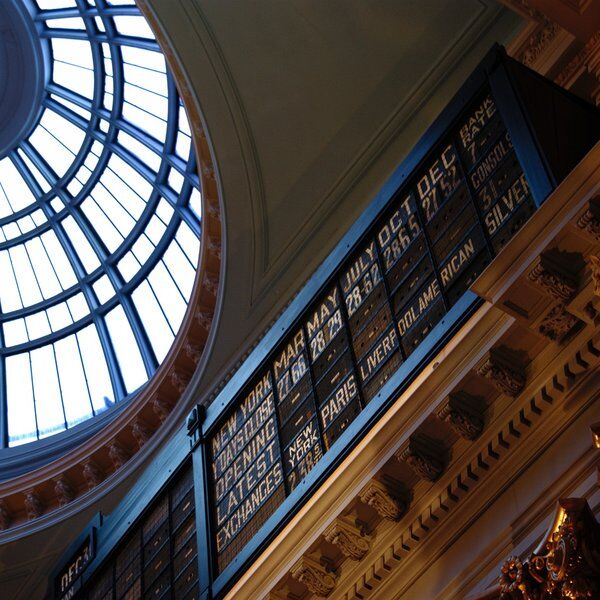
The Royal Exchange Survives War and Reinvents Itself
The history of the Royal Exchange Theatre doesn’t end with a bygone era. In fact, it stretches through to the present day, with many events still in living memory.
In December 1940, during the Manchester Blitz of the Second World War, the Royal Exchange building suffered extensive damage from a direct bomb hit. Though it was partially restored and continued to operate as a trading hub for some years, the cotton industry was already in decline.
By the 1960s, the trading floor had fallen silent, echoing the end of an era for Manchester’s once-mighty textile empire. But this wasn’t the end, it was simply the beginning of a bold reinvention.
In the 1970s, a group of visionary artists and theatre-makers saw an opportunity to transform the abandoned space into something extraordinary. Inside the shell of the historic trading hall, they built an intimate, in-the-round theatre like no other in the UK with a radical seven-sided glass and steel module suspended from the building’s columns.
The Royal Exchange Theatre officially opened in 1976, breathing new life into the historic landmark and into Manchester’s cultural landscape.
Tragedy struck again in 1996 when the building was damaged by the IRA bombing of Manchester, one of the largest bomb detonations in Britain since WWII.
But just like before, the Royal Exchange endured. A £32 million restoration followed, modernising the space while honouring its architectural integrity and historical roots.
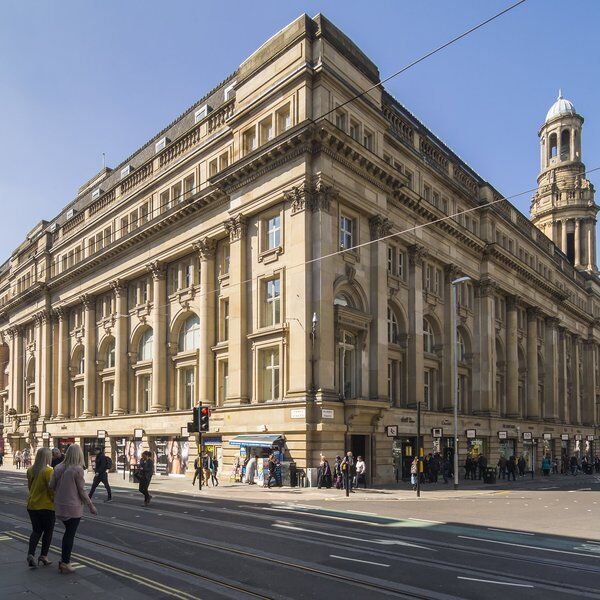
More Than a Stage: A Unique Theatrical Space
Step inside the Royal Exchange Theatre, and you’re stepping into one of the most extraordinary performance spaces in the UK. Suspended like a spaceship within the grand hall of a former trading floor, the theatre’s in-the-round stage creates an unforgettable experience—for audiences and performers alike.
This isn’t your typical auditorium. With seating on all sides, the design brings the audience up close to the action, dissolving the boundaries between viewer and performer. The result? A deeply immersive theatre experience unlike anything else in Manchester—or anywhere in the country.
Over the years, the Royal Exchange Theatre has earned a national reputation for bold, innovative productions that push creative boundaries while remaining deeply accessible. From fresh takes on Shakespeare and classic revivals to daring new writing and world premieres, the venue offers something for every theatre lover.
The 21st Century Beckons: Award-Winning Performances and A-List Talent
These days of course, the most obvious reason to visit the Royal Exchange Theatre is to see a show. If that’s you, you’re in for a treat.
The theatre has played host to some of the UK’s finest acting talent, including Sir Kenneth Branagh, Maxine Peake, Vanessa Redgrave, and David Tennant, all of whom have all graced its stage. Peake, in particular, is closely associated with the venue, having delivered critically acclaimed performances in roles such as Hamlet and Blanche DuBois in A Streetcar Named Desire.
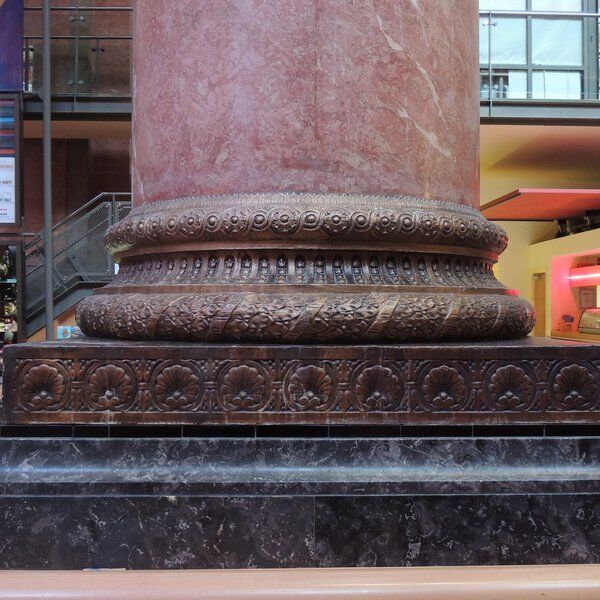
The Royal Exchange Theatre: A Living Piece of Manchester’s Heritage
And that leads us to the present day. Hopefully, we’ve been able to show you that The Royal Exchange Theatre is more than just a performance venue. This is a living piece of Manchester’s heritage and, in my opinion at least, few places capture the spirit of the city quite like it. Here, history and creativity meet under one magnificent roof.
And the best part is, you don’t even need theatre tickets to enjoy it. Passersby or dawdlers like me (and you!) are welcome to come in and take a look around, grab a coffee or some lunch, or just read a book in the gigantic Great Hall (a favourite pastime of mine).
Whatever your reason for visiting, there’s two things to note.
On one hand, it’s clearly a working theatre, bold, modern and critically acclaimed. On the other, it’s a preserved historical landmark, rich with stories of Manchester’s industrial rise, wartime struggles and its artistic rebirth.
Plan Your Visit to the Royal Exchange
Ready to experience this iconic Manchester landmark for yourself? Here’s everything you need to know to make the most of your visit:
Transport
- Nearest Metrolink Stop: Exchange Square or St Peter’s Square
- Nearest Railway Station: Manchester Victoria or Manchester Piccadilly
- Bus Routes: Multiple routes stop nearby on Deansgate and Cross Street
Opening Hours
- Building & Café: Open daily from 10am
- Box Office: Monday–Saturday, 10am–6pm (later on performance nights)
- Theatre Shows: Times vary depending on the production – check the official website for current listings
Accessibility
The venue is fully accessible, with step-free access, lifts, and wheelchair seating available. BSL-interpreted, captioned, and audio-described performances are regularly scheduled.
Find More Things to Do in Manchester with CityDays
So there you have it, the history and significance of the Royal Exchange Theatre in Manchester.

If you’re looking for more tailored ideas of fun things to do, check out our other guides:
- 16 Incredible Places to Visit in Manchester for Free
- Quirky Things to Do in Manchester
- Things to Do in Manchester for Couples
- Birthday Ideas in Manchester
- Date Ideas in Manchester
- Things to Do in Manchester for Young Adults
And if you’re in the mood for some exploration, why not sign up for an adventure?
At CityDays, we create fun, interesting and challenging treasure hunts around the world to help you immerse yourself in a city’s culture, history and hidden secrets.
Want to find out more?
Check out all our available activities in Manchester here and embark on an adventure in the city you’ll never forget: CityDays awaits!
